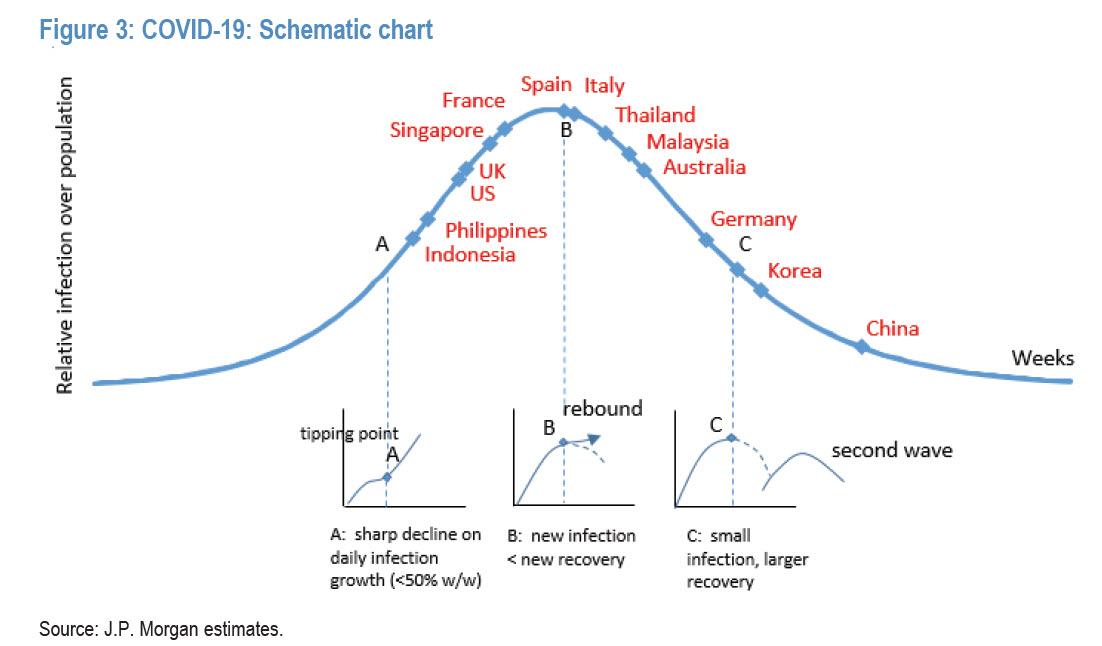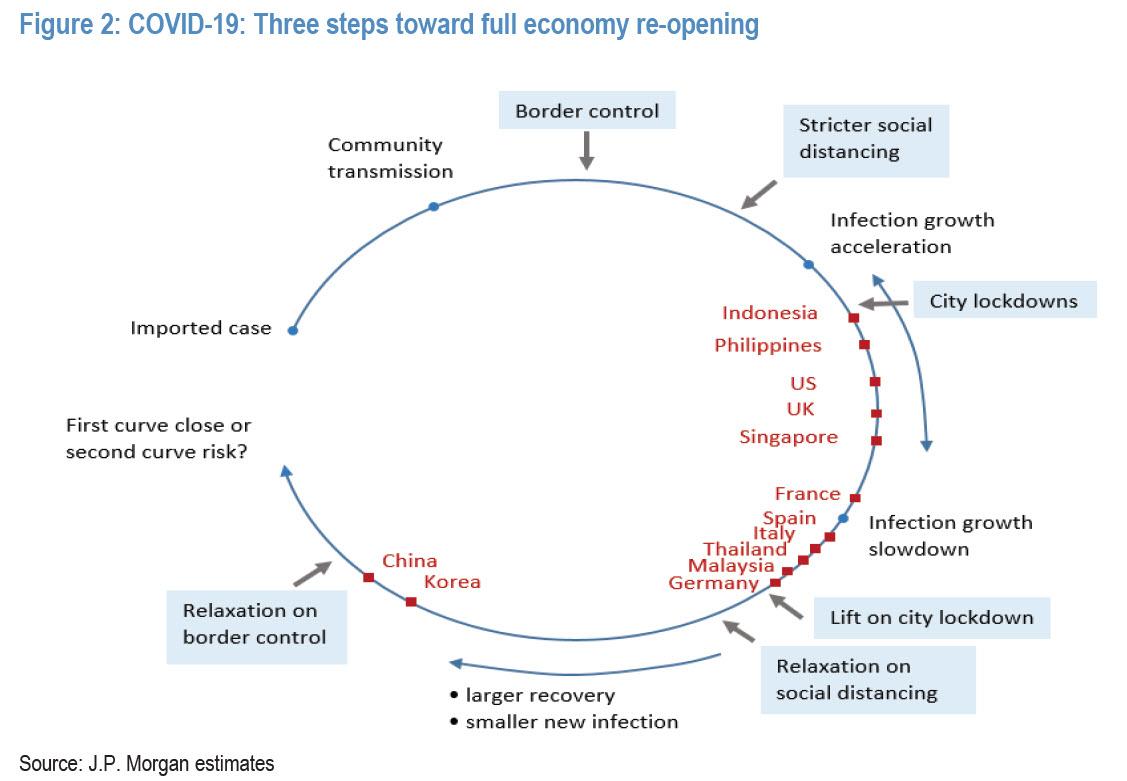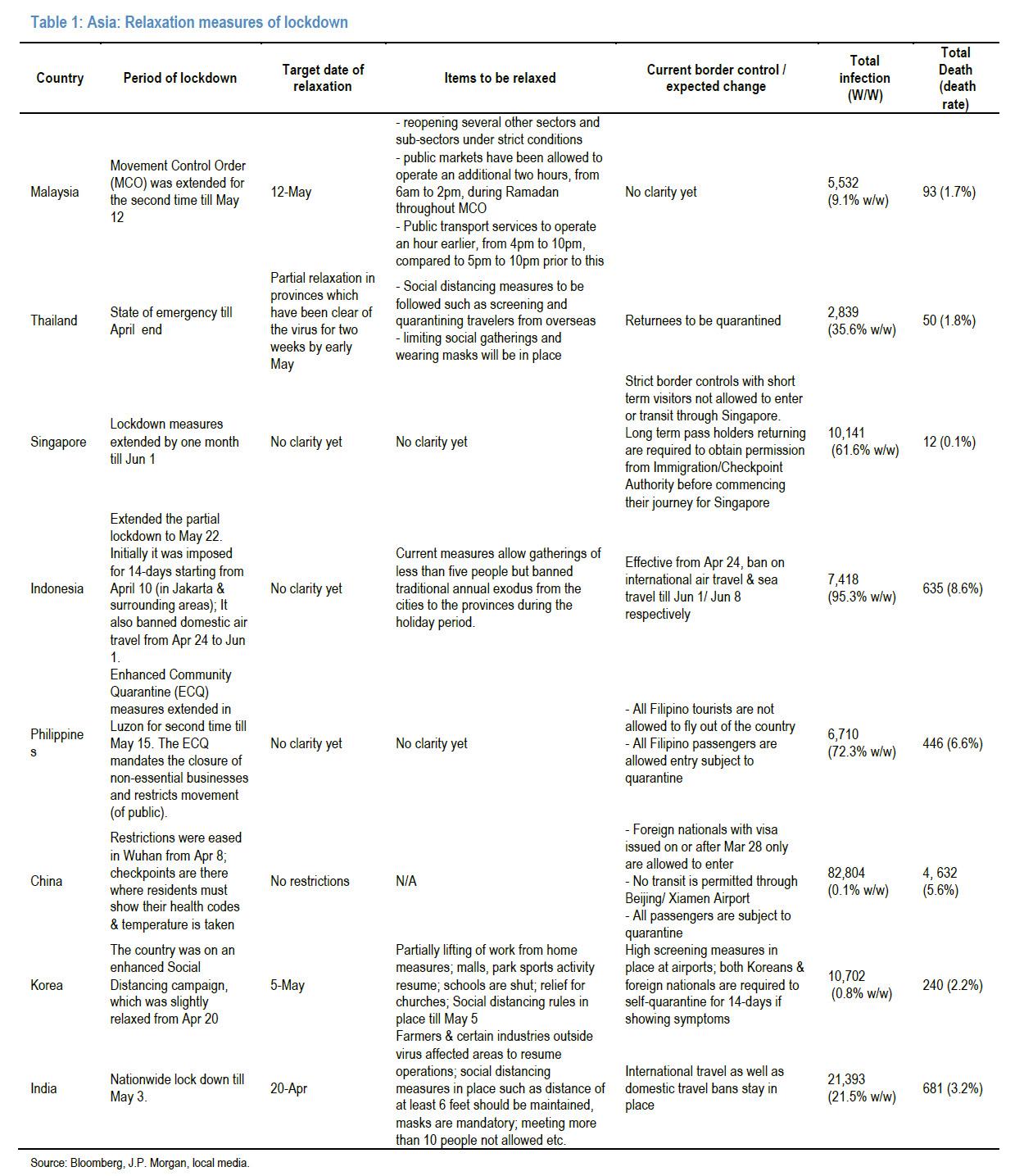Here Are The Three Steps For An “Exit Plan” Torward Full Economic Re-opening
Global infection growth slowed from 40% W/W to 20% W/W in the last fortnight (total infection: 2,709,483, death: 190,872, 7.0% mortality rate) as a majority of countries are past or nearing infection peak of the coronavirus curve.
And as many states are on the cusp of reopening, JPMorgan has enumerated a three step “exit plan” framework incorporating community transmissions, imported cases and time to relax social distancing. However, as before, the bank’s central thesis is that until a specific vaccine is available, the potential risk of a second wave should be the main determinant of strategy.
First, some big picture thoughts: broadly speaking, once community transmission is confirmed, the strategy on public health intervention has been focused on slowing the infection curve to a smaller scale (i.e., curve flattening) so as to manage the infection under hospital capacity and to reduce potential mortality risk in the community under strong boarder control. As local infections are brought under control, a series of curve control relaxation measures would be under consideration. JPM’s MW Kin visualizes three steps of an “exit plan” building in stages of community transmission, imported cases, and relaxing social distances.
The three steps toward a full economy reopening are shown below:
More details below:
- Community transmission: For a country with fewer new infections under adequate hospital capacity, the infection curve would be under control. Thus, it would likely be appropriate for the governor to consider lifting the city lockdown or relaxing social distancing. In this process, the net infection tally (=total infection-recovery death) could remain at a certain level, thus the re-opening plan should be based on a conservative approach so as to reduce the transmission rate. If not, there exists the risk of curve rebound or re-acceleration. The concerning re-acceleration in local infections in Singapore for the last two weeks is supporting evidence for the risk outcome.
- Imported case: Once community transmission is under strong control, the next step would be relaxation on border control. Due to asymptomatic cases and the latent period (~2 weeks) of COVID-19, even when community transmission is under strong control, there exists risks of a second wave from imported cases. As each country is at a different stage in the infection curve, the relaxation on border control should not be immediately implemented with re-opening of the economy. Instead, in JPM’s opinion, it should be considered only when most countries’ infection curves are under strong control. Meanwhile, it should be highly encouraged to ask passengers to take the virus test at the airport (i.e., full scale of test at arrival should be maintained for a while despite the inconvenience) and to maintain the 14 day self-quarantine rule. This is perhaps the best way to minimize the risk of a second wave
- Social distancing voluntary: With COVID-19 assumed to last for a while in the community, JPMorgan believes that it is essential for the public to maintain social distancing. In this stage, the format of social distancing could shift from “compulsory” by law to “voluntary” at the individual/community level, instead of entirely ending this practice. Also, in theory, if COVID-19 test kits would be largely available to the public, at affordable prices, and test results could be confirmed in a few minutes, this could be one of the most powerful solutions to re-activate the economy post the first curve.
Finally, since Asia is furthest ahead on the curve, here is a recap of how each nation is proceeding toward full reopening:
Tyler Durden
Sun, 04/26/2020 – 17:53
via ZeroHedge News https://ift.tt/2W2NSkG Tyler Durden


